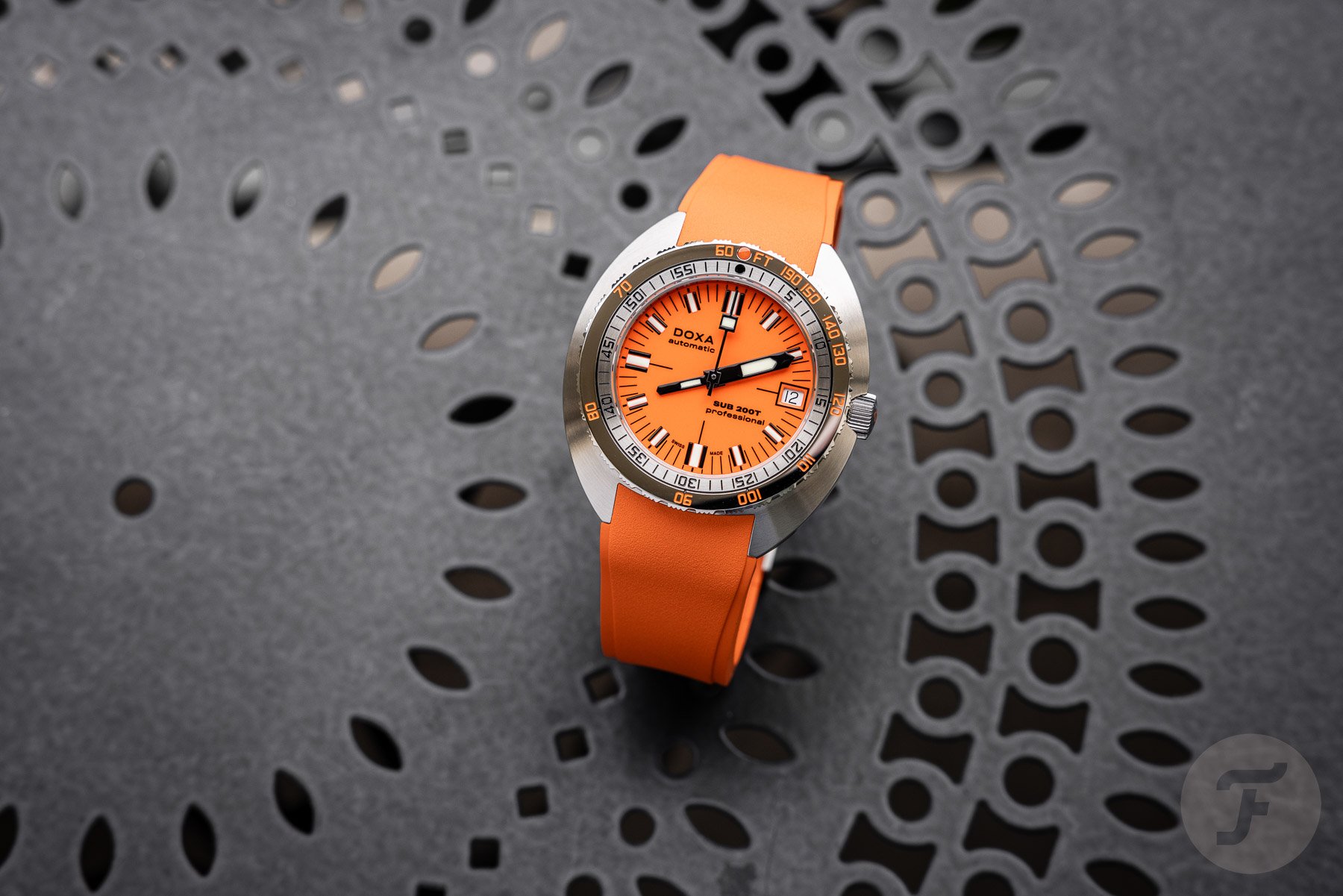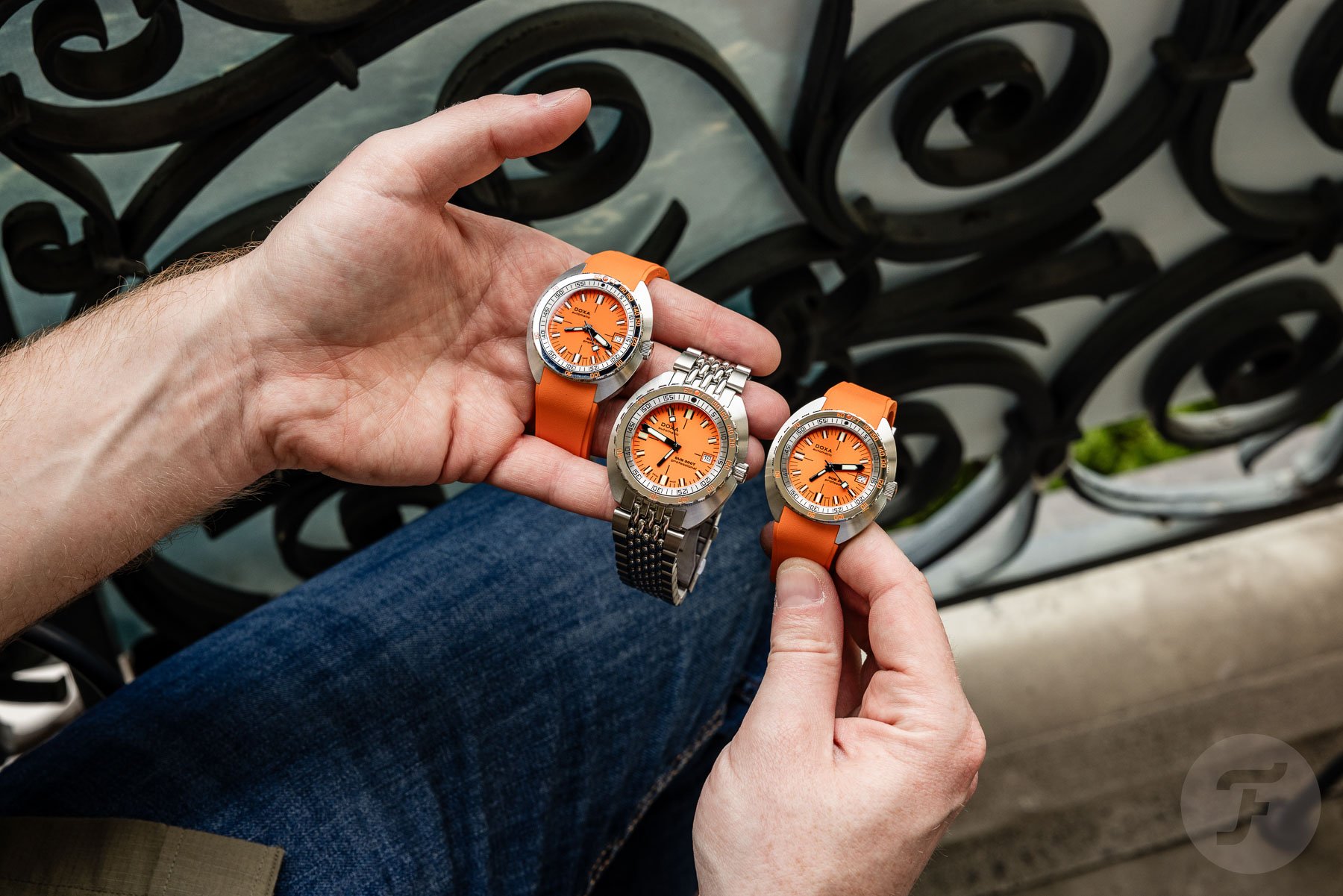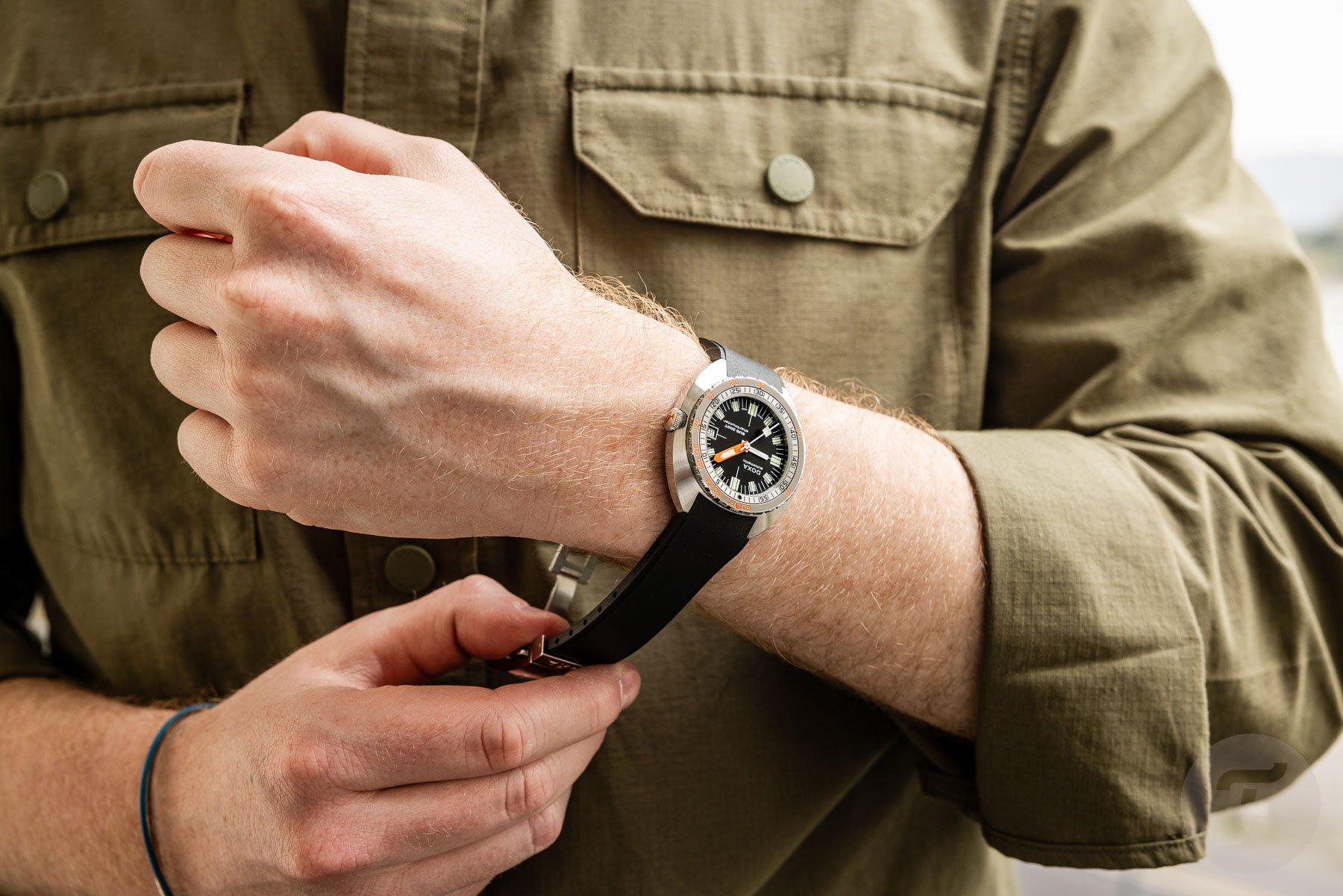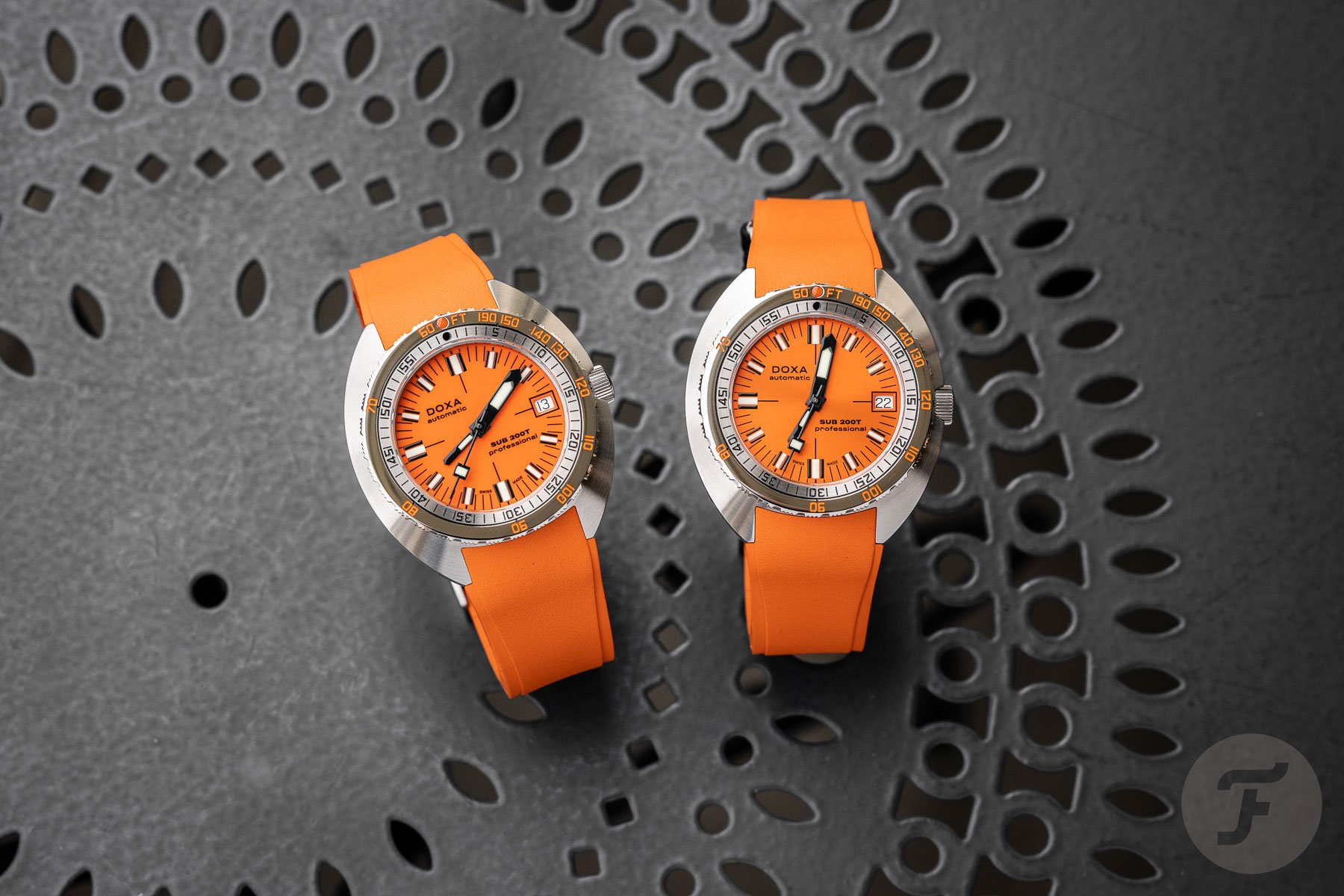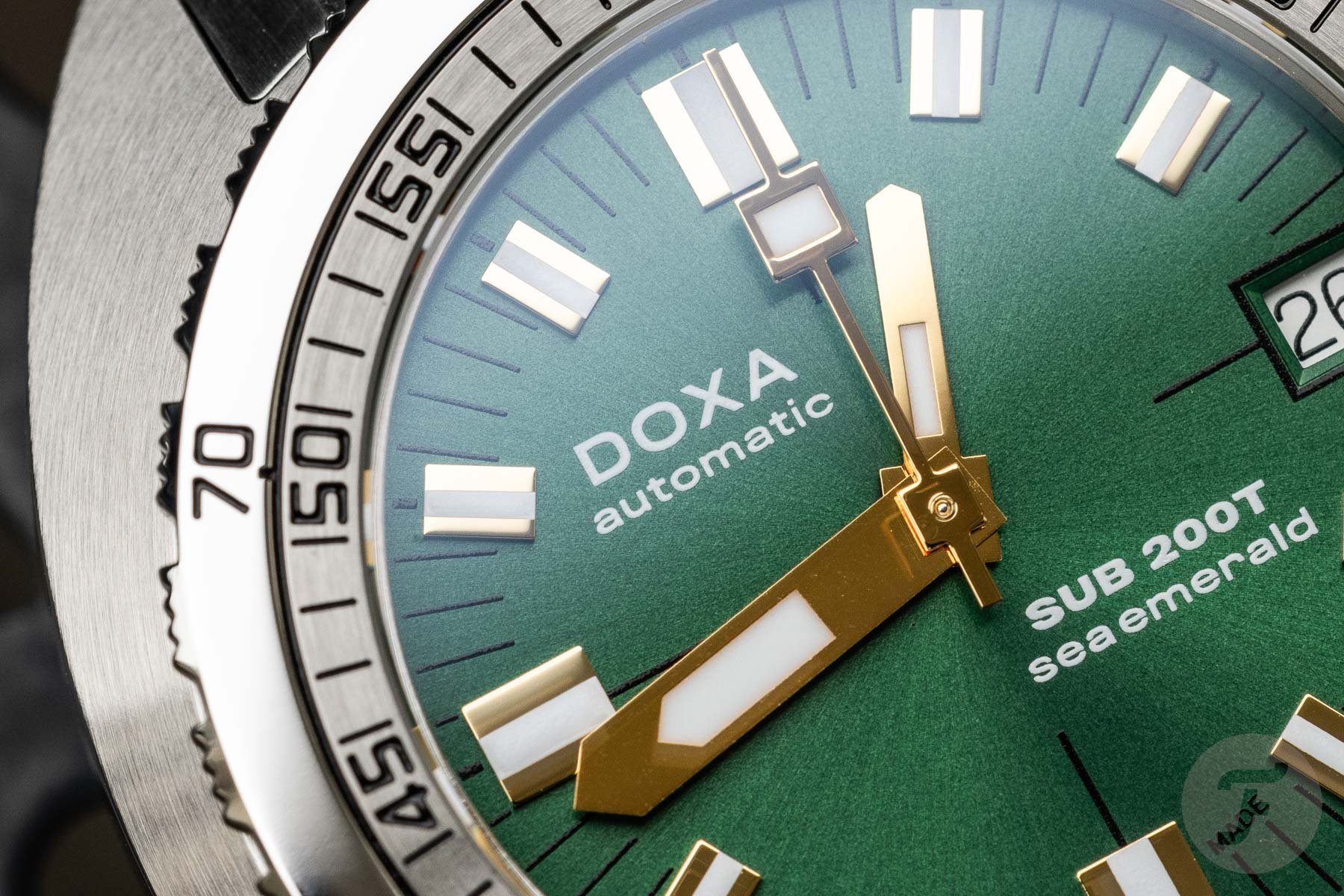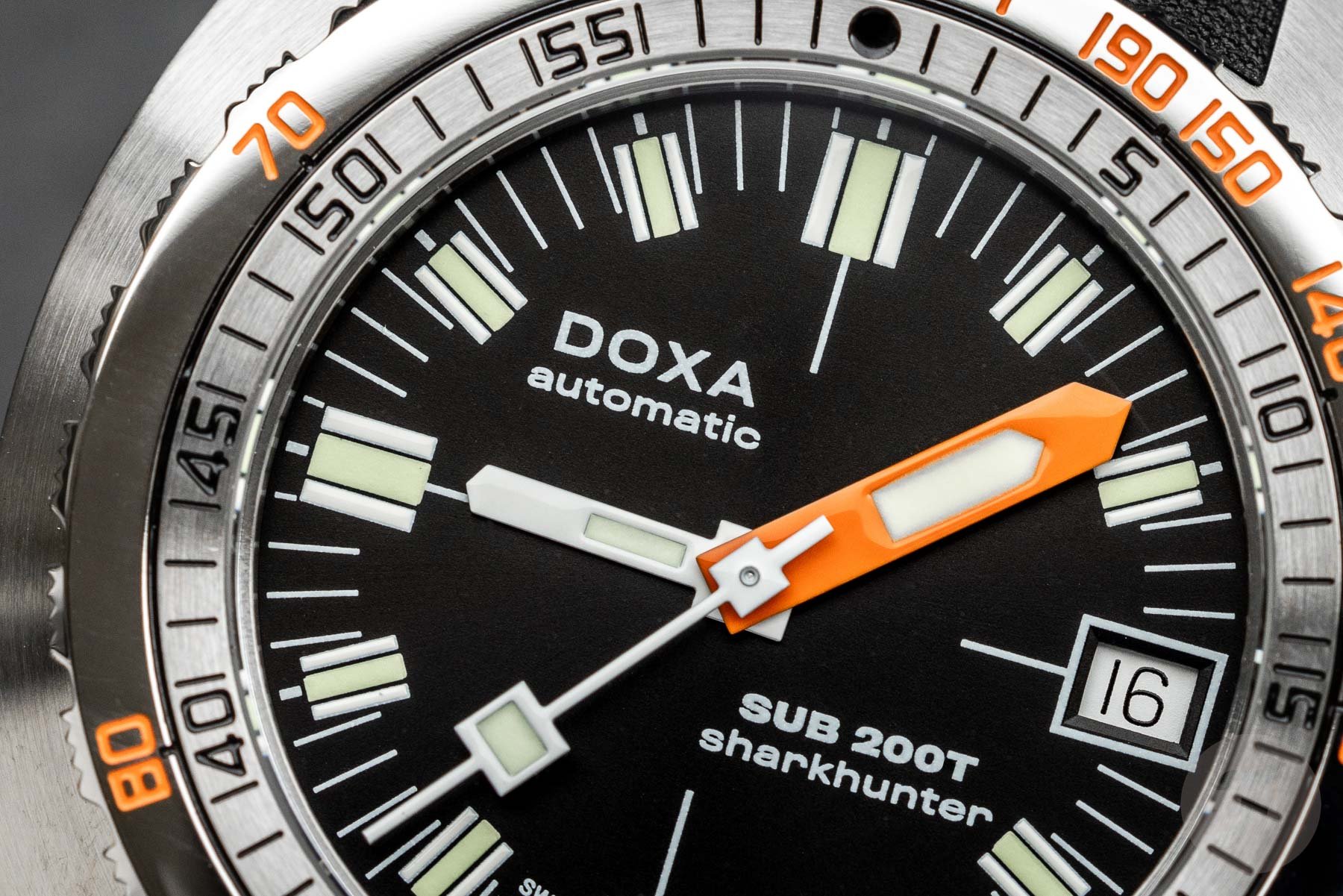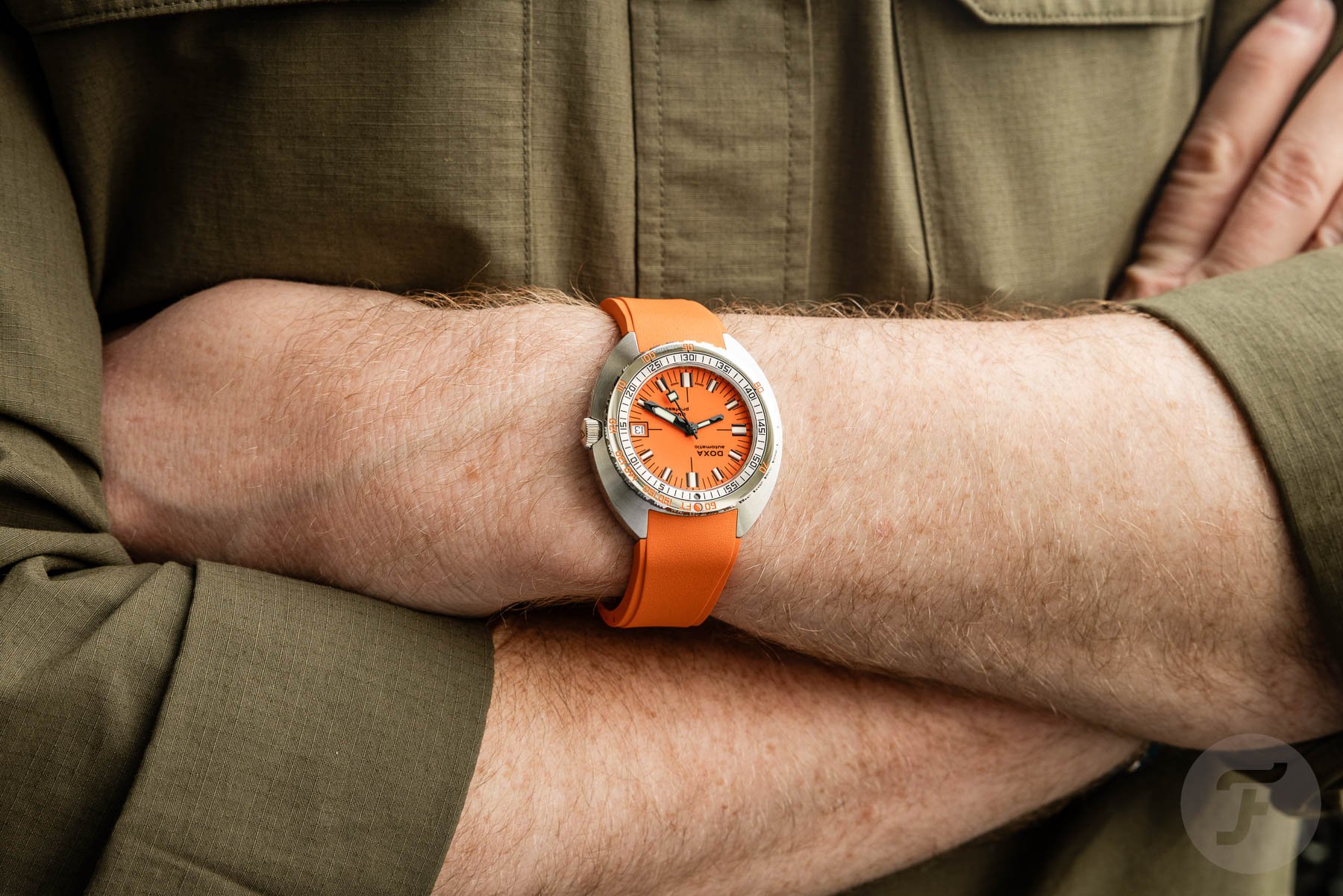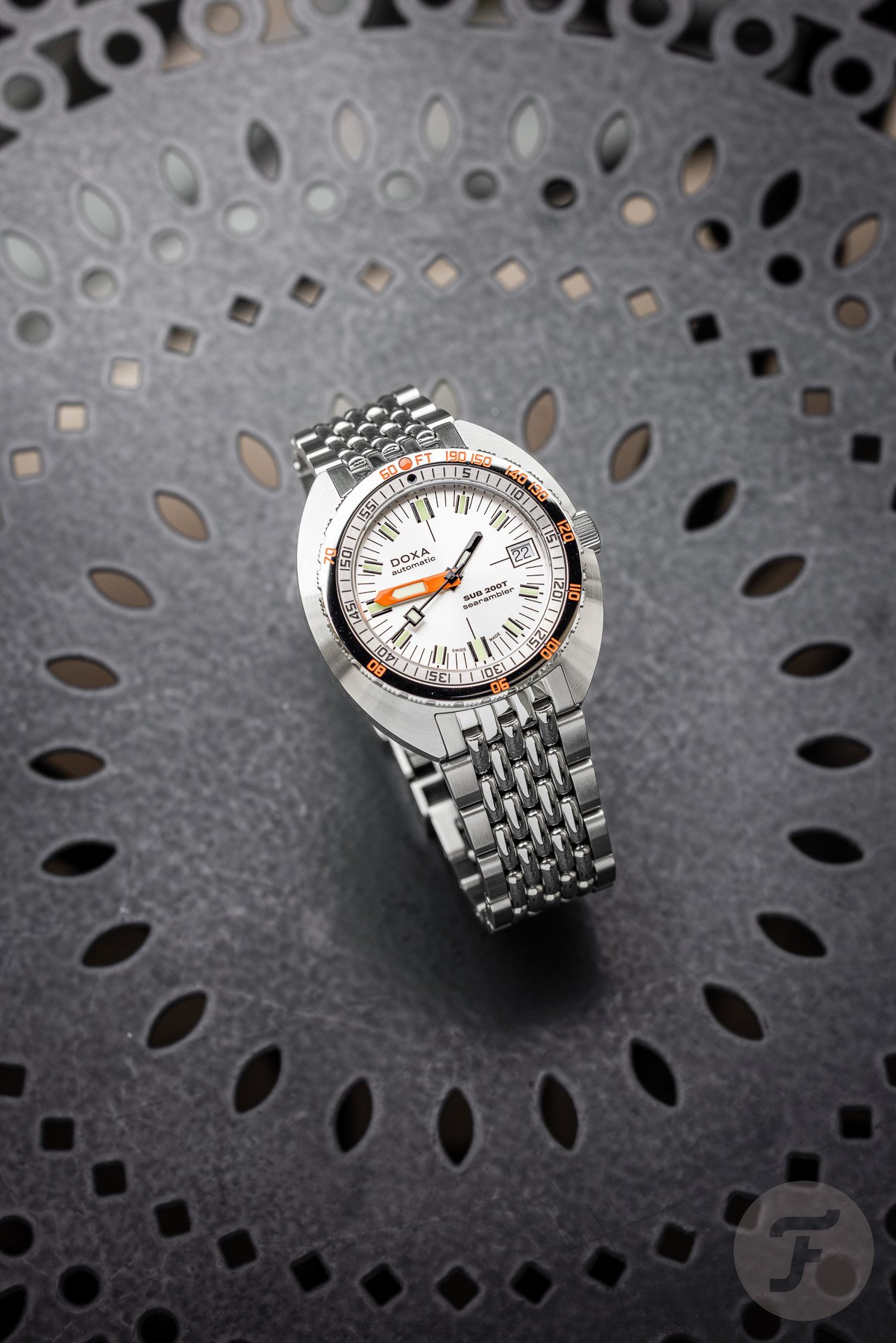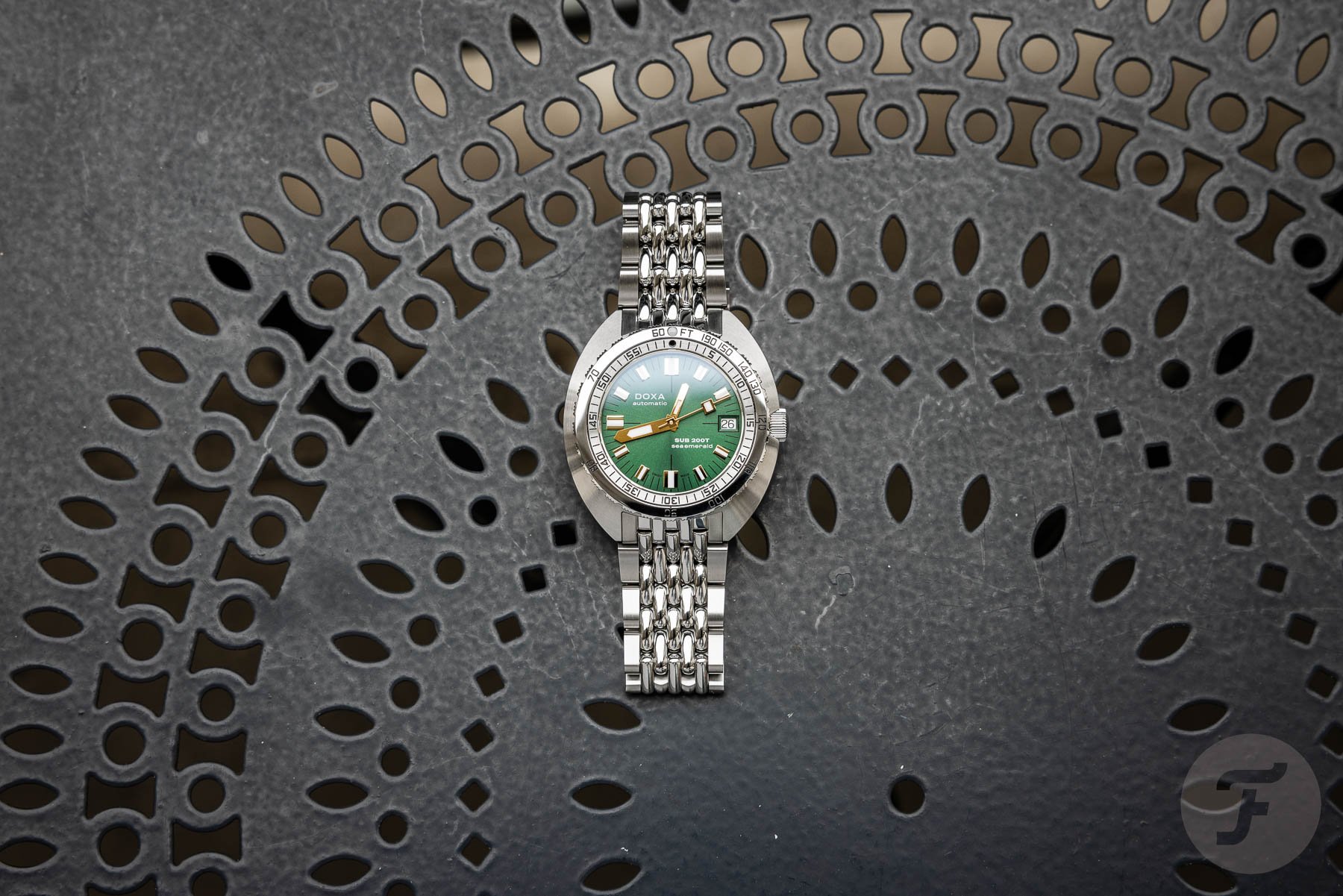Hands-On With The New Downsized Doxa Sub 200T
Doxa recently announced a new line of divers in a smaller form factor — the 39mm Sub 200T. I got a chance to try the entire lineup. I also had a full-sized Sub 300T for comparison at hand. In short, I got to form a pretty comprehensive image of what this new Doxa diver is all about. Join me in a closer look at the brand-new Doxa Sub 200T.
One pleasant surprise, especially in today’s crazy market, was the price of this new model. Doxa managed to offer it at €400 less than the bigger Sub 300T. This puts it firmly in Seiko’s mid-range divers’ territory. Let’s see how they stack up!
Doxa Sub 200T specifications
Let’s get the obligatory stuff out of the way before we delve into what this new size is like. The new Doxa Sub 200T is a 39mm × 41.5mm × 10.7mm stainless steel dive watch. The water resistance is rated at 200 meters. This is down from 1,200 on the Sub 300T, but it is still more than most will ever likely need. The case is constructed like a true dive watch as well, featuring a screw-in case back and a screw-down crown, a unidirectional bezel, and a sapphire crystal.
Inside, we find the trusty Sellita SW200-1 automatic ébauche caliber. The movement has the familiar power reserve of 38 hours and ticks away at a 28,800vph frequency. To me, this is exactly the kind of movement you want in a watch like this. It is dependable, simple, and super easy to get serviced anywhere. I would take this over entry-level in-house or proprietary calibers any day of the week. Kudos to Doxa for not going down that path. My only criticism is that Doxa doesn’t mention the exact brand and type on its website.
The Sub 200T comes in a whopping 26 variants. There are different colors, lacquered versus sunburst dials, and a rubber strap or beads-of-rice bracelet for each variant. In short, there should be a version for almost anyone, especially considering Doxa explicitly markets this as a unisex watch.
The Doxa Sub 200T’s smaller size
Okay, let’s address the primary topic here — size. Aesthetically, the Sub 200T is almost a perfect copy of the Sub 300T. You would be forgiven for thinking the design is just a Sub 300T copied at 92%. Of course, there is more to it. For instance, the Sub 200T is thinner than the 300T, not proportionally but quite a bit more than that. Add the 18mm lug spacing, and you have a watch that feels much more elegant and svelte.
Don’t be fooled into thinking this wears like a Tudor Pelagos 39 or a five-digit Rolex. Two Doxa-specific characteristics make the Sub 200T wear much smaller. First, there is the diminutive 41.5mm lug-to-lug. Second, the bezel measures only about 35mm across. Visually, this results in a subtler wrist presence than even the modest 39mm diameter suggests.
So, what does this mean in terms of wearability? Well, it opens up Doxa divers to a new use — daily wearing. If you get one in a subtler color, you can truly wear this on most occasions. On the wrist, these don’t feel like big, impressive divers as their bigger brothers do. They feel like sporty, vintage-inspired daily watches. I can see how they would speak to people with smaller wrists, but they can be equally appealing to larger-wristed folks who don’t want the pure tool vibe of the other models.
A word on the dial options
The Doxa Sub 200T comes in all the traditional Doxa colors. In addition, it is available in white and a new Sea Emerald green with gold-tone accents. Interestingly, the traditional colors that didn’t already feature a sunburst effect (like the silver Searambler) now have a sunburst option. Doxa offers an “iconic” lacquered option for each of these colors as well.
While sunburst dials aren’t new to Doxa — there was always the aforementioned Searambler and several sunburst-dial chronographs — the choice between flat and sunburst finishes is. I have to admit that I am not a fan. In my eyes, the sunburst somehow cheapens the look a little bit. It is an embellishment that the watch doesn’t need.
Interestingly, the difference isn’t necessarily super noticeable on all color options. In some lights, you have to look twice to see which version you are handling. I did find myself consistently preferring the iconic variant. Still, it is good to have some variety, and maybe it will bring in a different clientele.
Wearing the Doxa Sub 200T
I am sure the Doxa Sub 200T will be a big commercial success. I think the watch will appeal to those who like the Doxa look but are intimidated by the bigger sizes. People with smaller wrists will surely love these, including perhaps more women than the brand typically appeals to.
If I were buying a Doxa, I would stick with the Sub 300T or, my favorite, the Sub 300. At 17.5cm in circumference, my wrist certainly isn’t big. Still, to me, the larger size feels truer to Doxa’s character. I like how the big tonneau case sits like a curved shield on the wrist. I like that they are top-heavy, slightly clunky watches. The new Sub 200T is, in this sense, a much nicer watch. I just don’t like it as much as the less refined versions.
The 39mm Sub 200T looks just a little too dainty on my wrist for a Doxa. The narrow 18mm lug spacing doesn’t help in this respect. It truly does make it just a little too elegant for my liking. However, opinions were split across the Fratello team. Many of my colleagues strongly preferred this new size over the larger models. It is purely a matter of personal preference and by no means meant as a dismissal of this new model. However, I have one little gripe with these that is perhaps less subjective — the length of the hands. The minute and seconds hands feel a little too short. They don’t reach quite as far into the minute track as on the big Sub 300T.
Closing thoughts
The Sub 200T is surely a clever move on Doxa’s part. It invites new people into the brand in terms of both size and price. People in the market for a mid-range Seiko diver now have the Sub 200 and Sub 200T from Doxa as serious contenders. I could see how Doxa’s mid-century and more specialist niche vibe could lure buyers away from the popular Japanese options.
There is very little to criticize when it comes to quality. The build and finishing are precisely as you might expect at the price. Speaking of price, at €1,550 on rubber and €1,590 on the bracelet, these are very competitively priced. Sure, you compromise on water resistance compared to the 300T, but the much thinner case easily justifies it. So, I would not have been surprised if Doxa had priced these at, say, €200 less than the 300T instead of €400. It would have even been justifiable if they were on par with the Sub 300T. Thank you, Doxa, for going against the trend of ever-increasing prices!
What do you think of the new Doxa Sub 200T collection? And which variant would be your pick? Let us know in the comments below.

